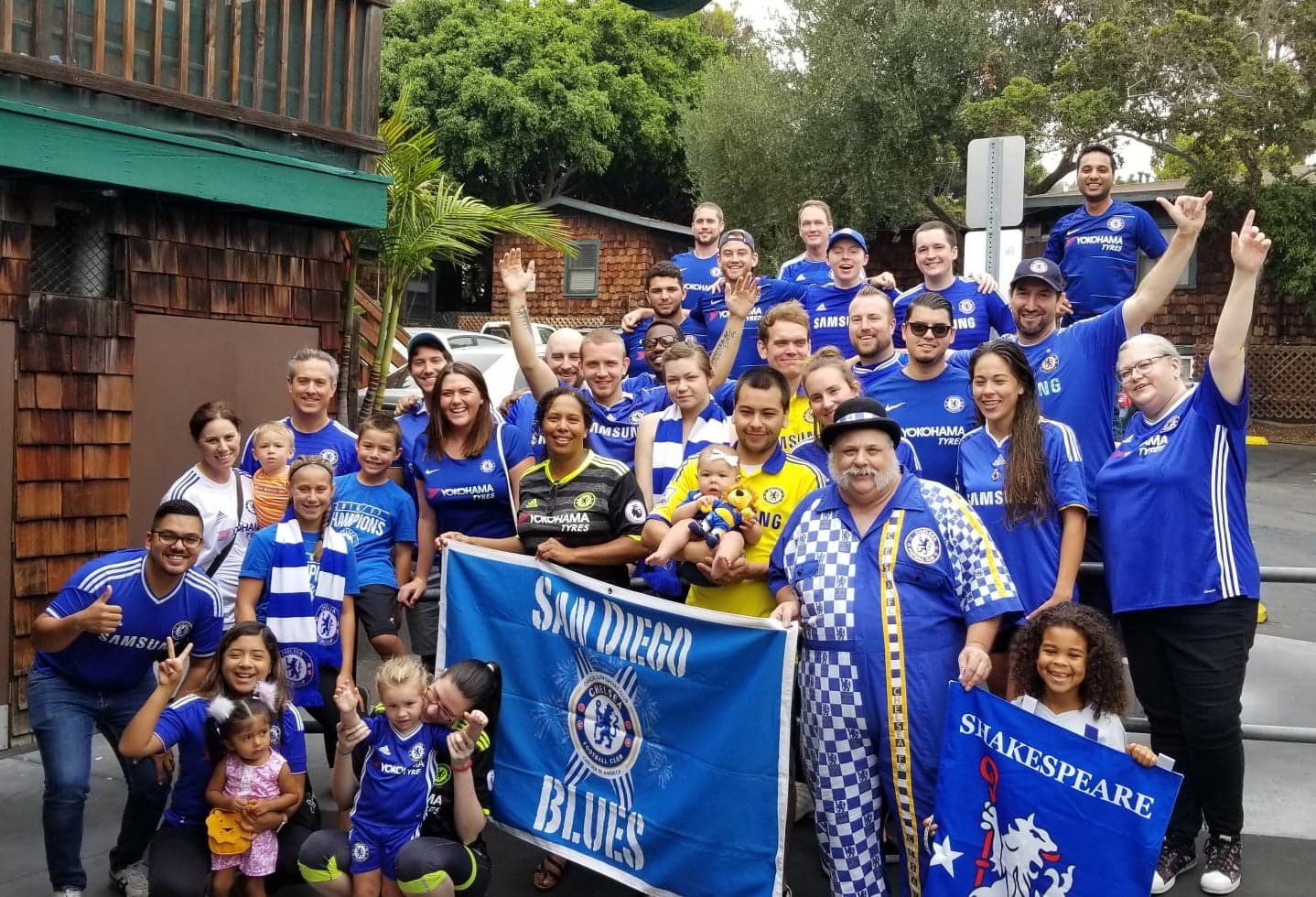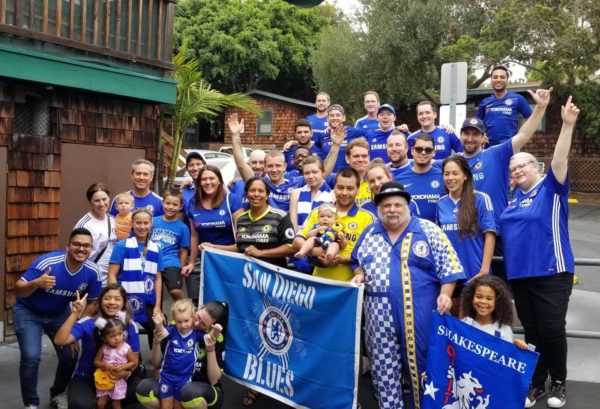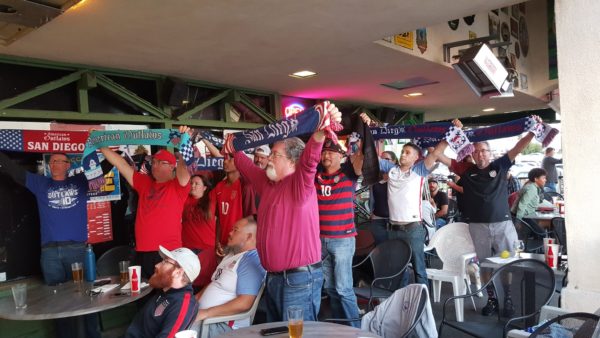Opinion: An Evaluation of San Diego Soccer Culture

Credit: @SanDiegoBlues

As the impending San Diego November elections draw closer, it will be important for voters to analyze the current state of soccer “fanship” in San Diego
When one thinks of American sports, one may immediately look to football or baseball – two sports that embody the “American-made” ethos of grit, toughness, and sometimes even violence. Unfortunately, America’s patriotic compatibility with gritty sports has brought with it a mentality of closed-mindedness. Consequently, sports that do not necessarily fit within American sports fan’s traditional notions of what sports “should be” are often immediately dismissed.
If you were to ask me five years ago about my opinion of soccer, I would have most likely fallen into this pitfall, scoffing and making some sort of baseless remark about how “soccer isn’t even a sport.” Interestingly enough, a large portion of America holds a similar view, as soccer has always been that one thing everyone in the whole world, except for us, takes extremely seriously. At the same time, this causes many Americans to pose the question: “Since our own country doesn’t take it seriously, why should we?”
Not only do I believe that soccer should be taken seriously, I would also argue that it is growing in the San Diego community, that the sport is already being viewed as legitimate, and that the sport may one day surpass other traditional American sports such as football and baseball in popularity. Now, one may be thinking, “Our national team didn’t even qualify for the World Cup, so why should I be excited about soccer in America?”
This is an assertion that I somewhat agree with as American soccer specifically can often be classified as a “snoozefest”. However, just because our own national team has not had success recently doesn’t mean that the sport isn’t growing in the states. By “growing”, I mean that more Americans than ever before tuning in to watch European and World Cup soccer matches.
In fact, the San Diego Union-Tribune published an article reporting that San Diego was the #1 viewership market for the World Cup final in the United States– even higher than New York City and Washington D.C. Therefore, it’s quite honestly no secret that soccer fanship is exploding in San Diego.
However, why the World Cup and European soccer over MLS? Well, Americans have a cultural tendency to desire to associate themselves with whatever is “best”. Thus, Americans enjoy associating our fan-ship with big names such as LeBron James and Tom Brady. While some may call this “bandwagoning”, this inherent American desire causes fans to extend themselves beyond the traditional regional barriers of fanship.
In fact, like many soccer fans, playing FIFA is what initially drew me into being a soccer fan. And I also admit that I myself am a prime example of extending myself beyond regional ties when deciding upon my own soccer loyalties. Being from San Diego, I had no regional ties to any MLS team. Thus, I turned to Europe, as teams playing in England, Spain, and Germany had the best overall team ratings. After playing a few matches with a couple different teams, 15-year-old me decided that Arsenal F.C. would be a cool club to support. For many American soccer fans like myself, fanship is not necessarily tied to anything concrete other than, “the jerseys look cool”, or “oh yeah, they have that one American on their team.” Allegiances aside, FIFA is how I’ve obtained most of my soccer knowledge. I’ve learned about important players, formations, and what constitutes effective ball movement– all through the simulated reality of PlayStation.

Consequently, I’ve come to heavily appreciate watching European soccer live. Unfortunately, a major drawback to my newfound interest is that live games take place seven time zones away, making start times atrociously early. Whether at 9:30 am, 7:00 am, or the dreaded 4:30 am start time, European soccer fandom on the west coast takes a whole new level of commitment. As much as I like to complain about getting up at the crack of dawn, I confess that these early game times make the sport that much more enjoyable– especially in the company of friends.
In an effort to make these mornings as enjoyable as possible, my friends and I have enjoyed heading down heading down to Shakespeare’s Pub and Grille to watch English Premier League matches. A local bar here in San Diego, Shakespeare’s opens their doors bright and early every single weekend as a service to soccer fans from across San Diego. At Shakespeare’s, “supporters groups” for teams such as Manchester United and Chelsea F.C. gather to root for their club. Dawning their jerseys with a pint of Guinness in hand (even at 6:00 am), supporters groups belt out joyous ballads filled with profanity and sexual innuendos as TV’s from every corner of the bar broadcast their beloved team. This experience is truly fascinating, as the passion and sense of community from the surrounding fans bring you as close as possible to attending a soccer game live and in-person.
Shakespeare’s is not the only “soccer bar” in San Diego, as Bluefoot Bar, The Harp, and O’Brien’s Pub (and many more!) are also hotspots for the American Outlaws as well as supporters groups of different European teams.
There is something profoundly communal about sharing the early hours of the day with others who share the same adopted obsession as you. There’s something exhilarating about diving head first into a new interest, a new hobby. And above all, there’s something fantastic about at least giving soccer a chance.
With the November elections fast approaching in San Diego, San Diegans will have the chance to make their voices heard as to whether or not they want the Soccer City ownership group obtaining the land where San Diego County Credit Union Stadium (formerly Qualcomm Stadium) resides and for them to lead the charge for obtaining an MLS team for San Diego. This topic is obviously one which has been hotly contested and very controversial in the San Diego area, and with that being said, important questions are yet to be answered regarding whether or not San Diego would respond and rally behind an MLS team.
However, whether one is for or against this initiative, it seems undeniable that soccer culture, popularity, and fanship are growing in San Diego.
A recent USD graduate, Ben grew up in San Diego and has been a life-long Padres fan. Currently, Ben is residing in Chicago, IL where he is pursuing his Master’s degree in Sports Media Journalism at Northwestern University.